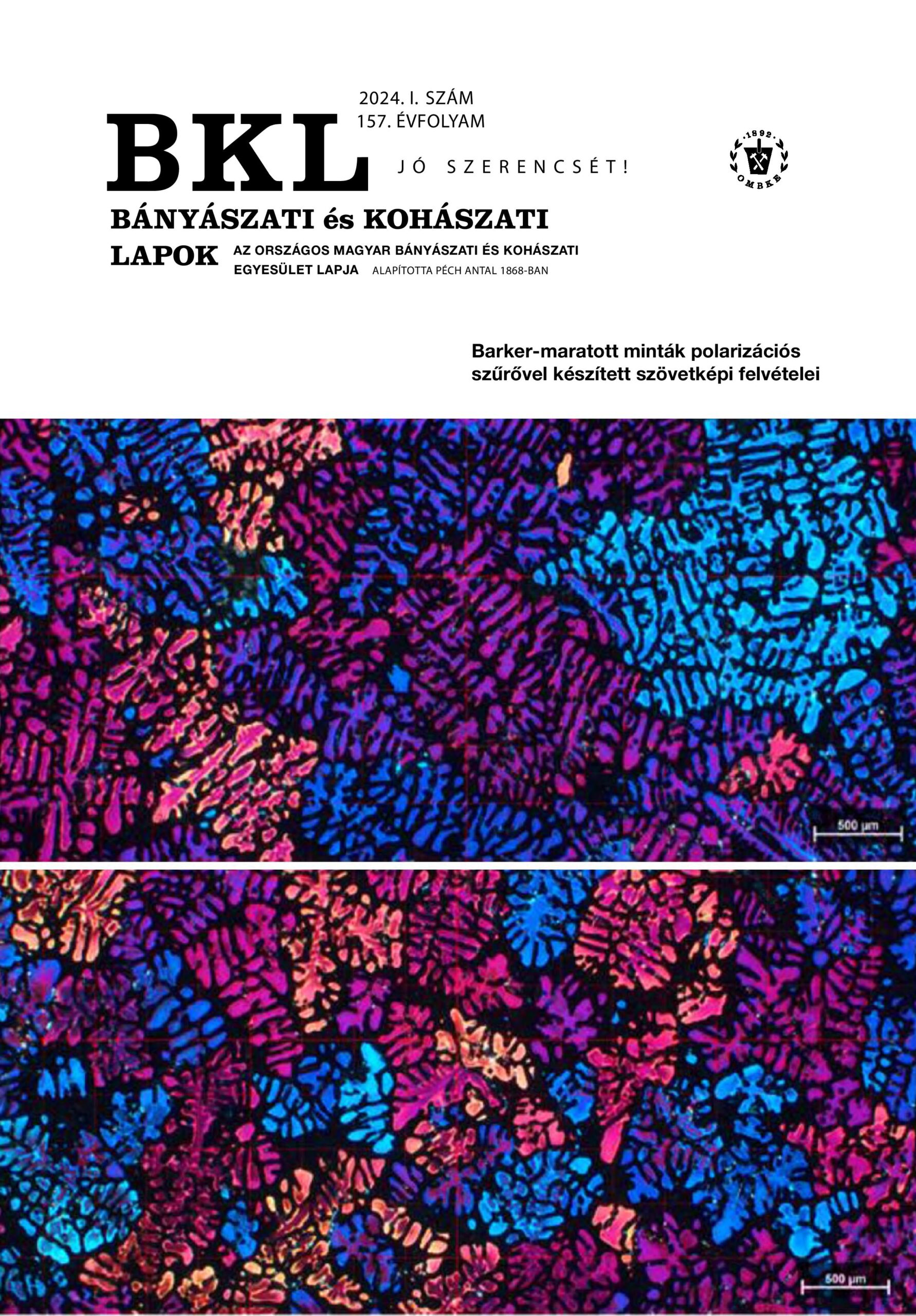From the Critical Raw Materials Marathon data collections 1. Brief review of critical mineral raw materials for battery production
Abstract
A team of Hungarian and international students from the Faculty of Natural Resources Research and Utilization of the University of Miskolc, TEKH, undertook the data collection and preliminary evaluation of critical and strategic raw materials, as well as their potential occurrences of mineral raw materials in Hungary, within the framework of a project. First of all, we have drawn up and published here a global overview of the basic raw materials required for electrical energy storage. Battery metals belong to the group of critical and strategic raw materials in the EU. In this grouping, they are still little known in Hungary, and there is a particular lack of knowledge regarding the occurrence of these materials in Hungarian geological environments. At the same time, the country has identifi ed developing a world-class battery manufacturing industry as a priority national strategic goal. In our opinion, this requires knowledge, research and development of domestic sources of raw materials. The data collection and the evaluations that can be based on it can eff ectively help the assessment of the country’s mineral resource resources with a new approach. The overview is based on the data in the database. These are available on separate data sheets, in more detailed form than can be read in our article. To do this, visit the TEKH website [2]. Further background information (e.g. partial geochemical data, list of publication references, photographs, research reports, etc.) is available by moving further using the links provided on the data sheets.
References
Földessy J., Mádai F. (2023): Bevezető egy új sorozathoz: Kritikus és stratégiai nyersanyagok az Európai Unióban és Magyarországon - multimédia-adatgyűjtemény építése a Miskolci Egyetemen. Bányászati és Kohászati Lapok, 156, 25-31. https://ombke.hu/wp-content/uploads/2023/12/BKL_2023-4.pdf
Földessy J. (szerk.) (2014): Basic research of the critical raw materials of Hungary. Milagrossa, Miskolc, 159 p. https://kritikuselemek.uni-miskolc.hu/files/files/egyetem10_vegso_okt26.pdf
https://novekedes.hu/elemzesek/terkepre-tettuk-a-hazai-akkumulatoripart
Rudnick R. L., Gao S. (2003): Composition of the continental crust. Treatise of Geochemistry, 4, 1-64. Elsevier, Amsterdam. ISBN 0-08-044338-9. https://doi.org/10.1016/B0-08-043751-6/03016-4
https://brine-ris.eu/wiki/Main_Page
https://www.vg.hu/energia-vgplus/2023/11/mol-fontos-dontesek-elott-all-a-litiumprojekt
https://www.statista.com/statistics/247633/manganese-price-forecast/
https://rmis.jrc.ec.europa.eu/eu-critical-raw-materials
https://pubs.usgs.gov/periodicals/mcs2024/
Pál-Molnár E., Bíró L. (szerk.) (2013): Szilárd ásványi nyersanyagok Magyarországon. 249 p. Geolitera, Szeged.
Horn S., Gunn A. G., Petavratzi E. (2021): Cobalt Resources in Europe and the Potential for New Discoveries. Ore Geology Reviews, 130. https://doi.org/10.1016/j.oregeorev.2020.103915
Baco P., Bacova Z., Németh Z., Repciak M. (2015): Potential occurrence of selected, mainly critical raw materials at the territory of the Slovak Republic in respect to EU countries needs. Slovak Geol. Mag., 15, 87-120.
Dill H. (2010): The "chessboard" classifi cation scheme of mineral deposits: Mineralogy and geology from aluminum to zirconium. Earth Science Reviews, 100. 1-420. https://doi.org/10.1016/j.earscirev.2009.10.011
https://www.northerngraphite.com/about-graphite/ graphite-pricing/



